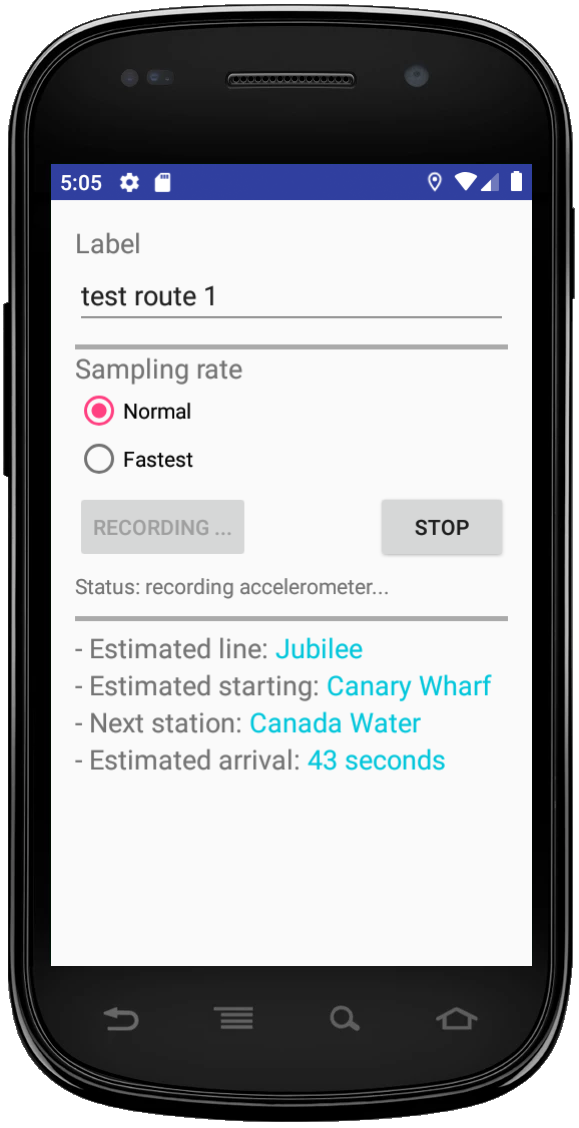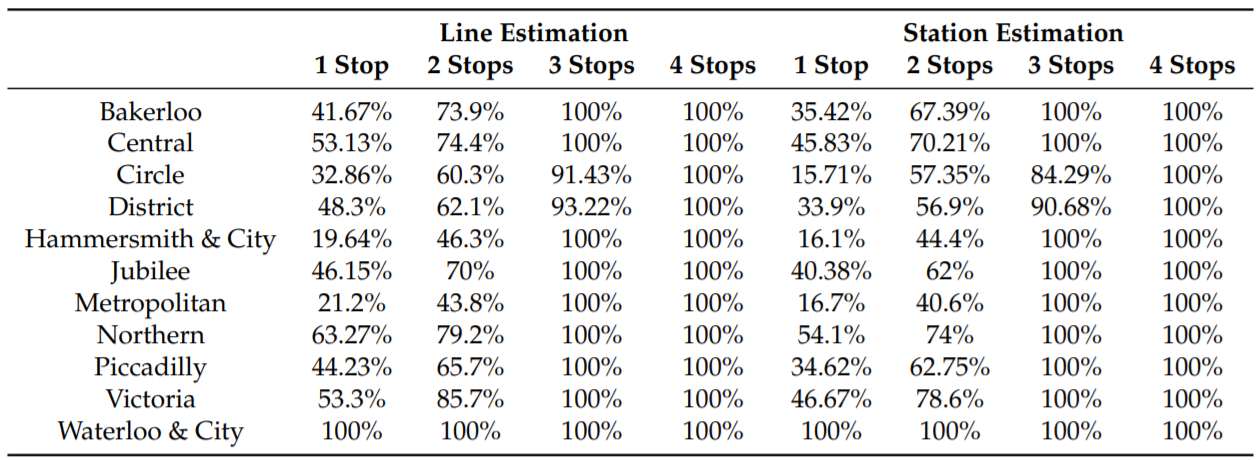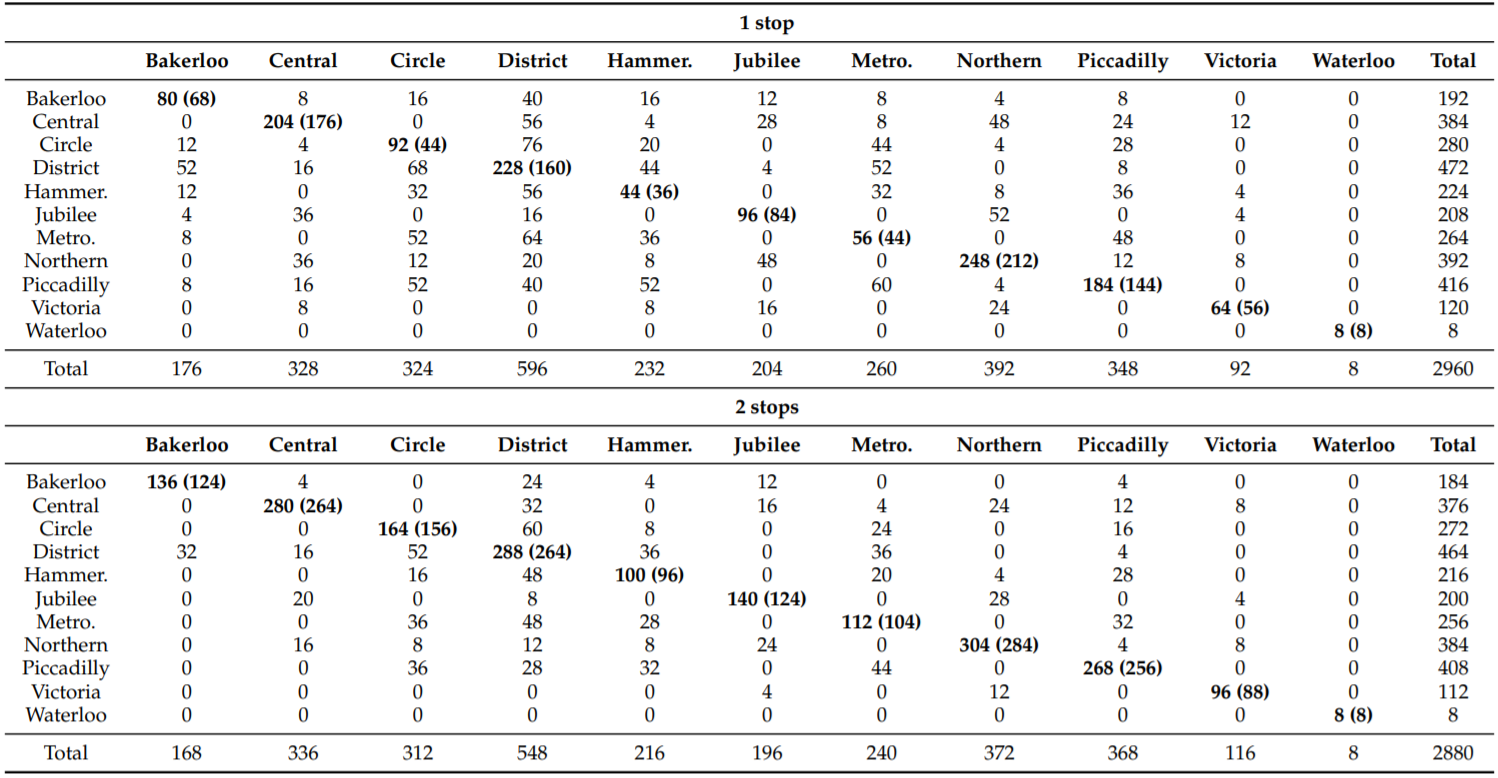Underground tracking
The problem
Everyday, over 3.75 million people use the London underground tube, with an average of 20 min on board per person.
However, underground passengers currently have no means of knowing their whereabouts between stations.
The challenge for providing such service is that the London underground tunnels have no GPS, WiFi, Bluetooth or any kind of terrestrial signals to leverage.
Two existing solutions attempted by Transport for London (TfL) only indicate the beginning and the end of the passengers' trip by reading when they tap their Oyster card at each station,
or by using the WiFi Access Points (APs) installed at each station platform to detect the passengers' presence.
The challenge for both approaches is that they cannot monitor the passengers in realtime along the lines.
My approach
In this article, we present a novel, yet practical approach to track underground passengers in realtime, with only the smartphone accelerometer and a training database recording the predetermined train's movements,
and the shape of the tunnels. We applied several filters to get rid of the noises generated by the human gestures and to expose the true train movements.

Our system is self-contained in the form of an app. The inputs will be recorded by the app, which also contains the training database and the route estimation mechanism.
The whole system requires no additional infrastructure or hardware to be installed anywhere on the underground network.
The sensor's measures will be saved locally on the phone but only temporarily for the realtime matching purpose.
As soon as a matching is found or when the app is closed, these measures are erased for security reasons. No internet connection is needed at any time.
The empirical results performed across all 11 lines of the London underground demonstrated that our approach can achieve 100% line and station estimation accuracy when the passenger has travelled through at least 4 continuous stops. With only PCA-based positioning estimation, we achieved up to 18 m accuracy, 90% probability.

The confusion matrix for line and station estimation: The columns represent the true classes. The rows represent our system's predictions. The diagonal number which is highlighted in bold, reports the correct line classifications for each class, with the number inside the bracket as the correct station estimation.

Publications
Interested researchers are invited to follow our papers and journals.1) Nguyen, Khuong An, You Wang, Guang Li, Zhiyuan Luo, and Chris Watkins. "Realtime Tracking of Passengers on the London Underground Transport by Matching Smartphone Accelerometer Footprints." Sensors 19, no. 19 (2019): 4184.
2) Nguyen, Khuong An, Chris Watkins, and Zhiyuan Luo. "Co-location epidemic tracking on London public transports using low power mobile magnetometer." In 2017 International Conference on Indoor Positioning and Indoor Navigation (IPIN), pp. 1-8. IEEE, 2017.
3) Nguyen, Khuong An, Raja Naeem Akram, Konstantinos Markantonakis, Zhiyuan Luo, and Chris Watkins. "Location Tracking Using Smartphone Accelerometer and Magnetometer Traces." In Proceedings of the 14th International Conference on Availability, Reliability and Security (ARES), pp. 1-9. 2019.